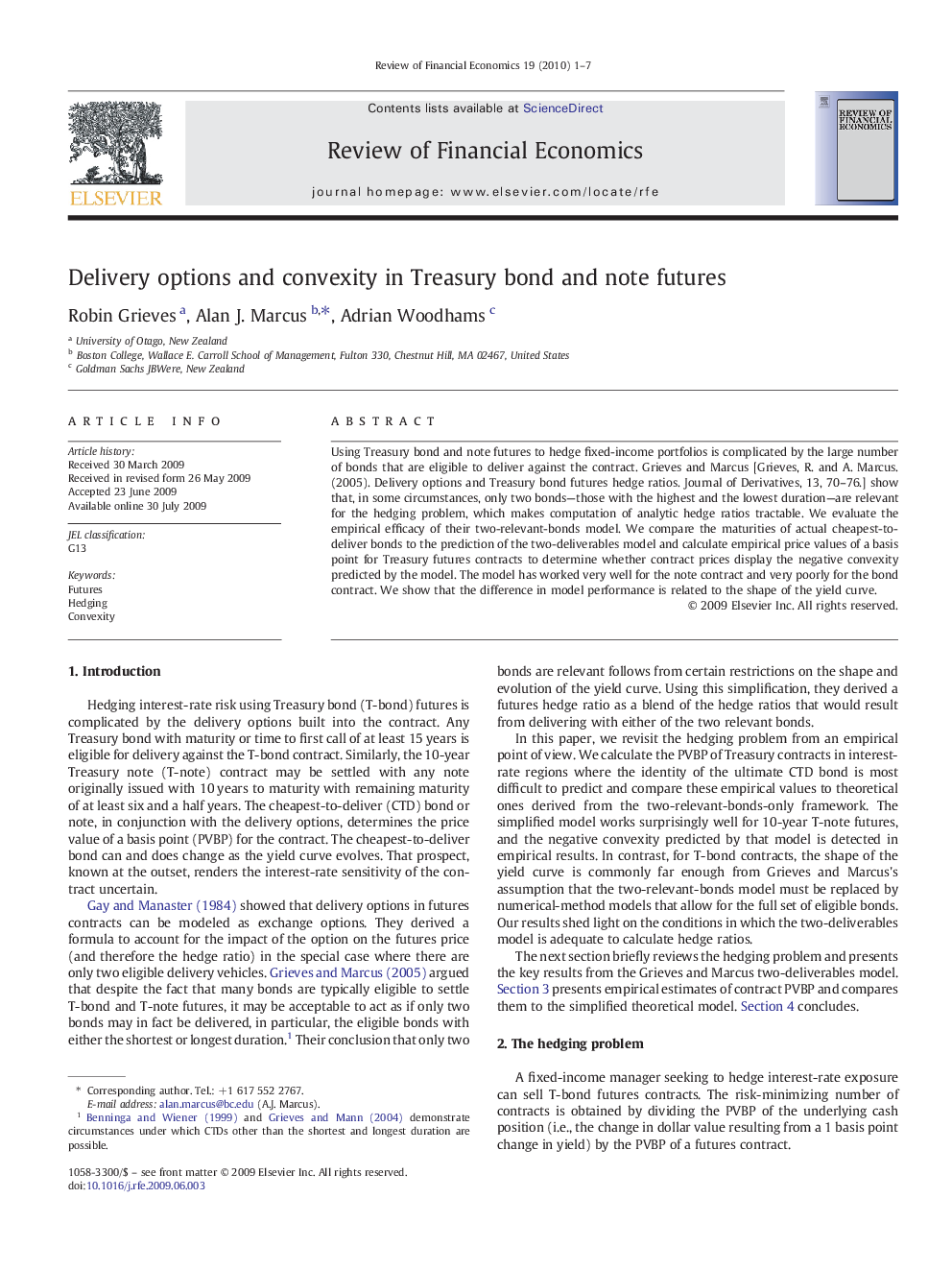| Article ID | Journal | Published Year | Pages | File Type |
|---|---|---|---|---|
| 986620 | Review of Financial Economics | 2010 | 7 Pages |
Using Treasury bond and note futures to hedge fixed-income portfolios is complicated by the large number of bonds that are eligible to deliver against the contract. Grieves and Marcus [Grieves, R. and A. Marcus. (2005). Delivery options and Treasury bond futures hedge ratios. Journal of Derivatives, 13, 70–76.] show that, in some circumstances, only two bonds—those with the highest and the lowest duration—are relevant for the hedging problem, which makes computation of analytic hedge ratios tractable. We evaluate the empirical efficacy of their two-relevant-bonds model. We compare the maturities of actual cheapest-to-deliver bonds to the prediction of the two-deliverables model and calculate empirical price values of a basis point for Treasury futures contracts to determine whether contract prices display the negative convexity predicted by the model. The model has worked very well for the note contract and very poorly for the bond contract. We show that the difference in model performance is related to the shape of the yield curve.
